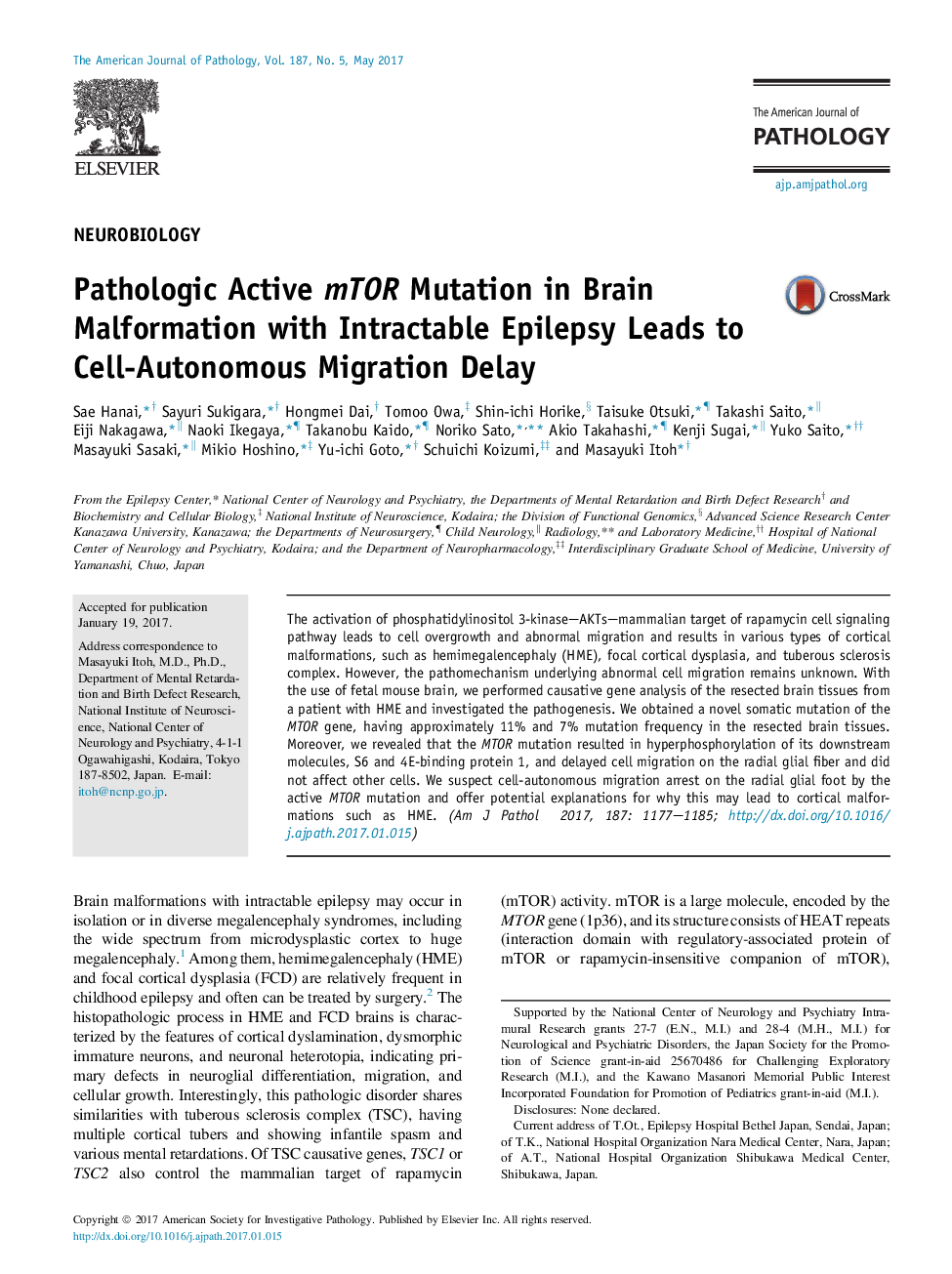| Article ID | Journal | Published Year | Pages | File Type |
|---|---|---|---|---|
| 5596118 | The American Journal of Pathology | 2017 | 9 Pages |
Abstract
The activation of phosphatidylinositol 3-kinase-AKTs-mammalian target of rapamycin cell signaling pathway leads to cell overgrowth and abnormal migration and results in various types of cortical malformations, such as hemimegalencephaly (HME), focal cortical dysplasia, and tuberous sclerosis complex. However, the pathomechanism underlying abnormal cell migration remains unknown. With the use of fetal mouse brain, we performed causative gene analysis of the resected brain tissues from a patient with HME and investigated the pathogenesis. We obtained a novel somatic mutation of the MTOR gene, having approximately 11% and 7% mutation frequency in the resected brain tissues. Moreover, we revealed that the MTOR mutation resulted in hyperphosphorylation of its downstream molecules, S6 and 4E-binding protein 1, and delayed cell migration on the radial glial fiber and did not affect other cells. We suspect cell-autonomous migration arrest on the radial glial foot by the active MTOR mutation and offer potential explanations for why this may lead to cortical malformations such as HME.
Related Topics
Health Sciences
Medicine and Dentistry
Cardiology and Cardiovascular Medicine
Authors
Sae Hanai, Sayuri Sukigara, Hongmei Dai, Tomoo Owa, Shin-ichi Horike, Taisuke Otsuki, Takashi Saito, Eiji Nakagawa, Naoki Ikegaya, Takanobu Kaido, Noriko Sato, Akio Takahashi, Kenji Sugai, Yuko Saito, Masayuki Sasaki, Mikio Hoshino, Yu-ichi Goto,
